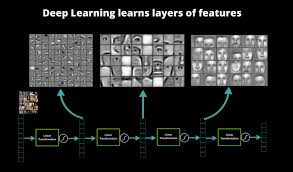Sparse Convolutional Neural Networks: Revolutionizing Deep Learning
Convolutional Neural Networks (CNNs) have been at the forefront of deep learning, revolutionizing various fields such as computer vision, natural language processing, and speech recognition. However, traditional CNNs are known for their high computational cost and memory requirements, limiting their scalability and efficiency.
Enter Sparse Convolutional Neural Networks (Sparse CNNs), a groundbreaking innovation that aims to address these challenges by introducing sparsity into the network architecture. Sparse CNNs leverage the inherent sparsity in real-world data to reduce the number of computations required during the convolutional operations.
So, what exactly is sparsity in the context of CNNs? In simple terms, sparsity refers to the idea that not all elements in a data tensor are essential for making accurate predictions. By exploiting this sparsity, Sparse CNNs can significantly reduce the computational burden without compromising performance.
One key advantage of Sparse CNNs is their ability to achieve comparable accuracy to traditional CNNs while using fewer parameters and computations. This makes Sparse CNNs ideal for applications where computational resources are limited or where real-time processing is crucial.
Moreover, Sparse CNNs offer improved memory efficiency, allowing them to handle larger datasets and models with ease. This opens up new possibilities for training deep neural networks on resource-constrained devices such as mobile phones and IoT devices.
Researchers and engineers are actively exploring different techniques to incorporate sparsity into CNN architectures. From structured pruning methods to dynamic sparse training algorithms, there is a growing body of research dedicated to optimizing Sparse CNNs for various tasks and applications.
In conclusion, Sparse Convolutional Neural Networks represent a promising direction in the evolution of deep learning models. By harnessing the power of sparsity, Sparse CNNs offer a path towards more efficient, scalable, and practical deep learning solutions that can drive innovation across diverse domains.
5 Essential Tips for Optimizing Sparse Convolutional Neural Networks
- Use sparse convolutional layers to reduce computation and memory usage by focusing on important regions of the input.
- Consider using techniques like pruning or quantization to further reduce the complexity of sparse CNNs.
- Experiment with different sparsity patterns or structures to find the optimal configuration for your specific task.
- Regularize sparse CNNs to prevent overfitting, as they may have fewer parameters than dense networks.
- Be mindful of the trade-off between sparsity and performance, as overly aggressive sparsity can degrade model accuracy.
Use sparse convolutional layers to reduce computation and memory usage by focusing on important regions of the input.
By utilizing sparse convolutional layers in neural network architectures, one can effectively decrease computation and memory usage by prioritizing significant regions of the input data. This approach allows the model to concentrate its resources on the most relevant features, thereby optimizing efficiency without compromising performance. Sparse convolutional layers play a crucial role in enhancing the scalability and practicality of deep learning systems, enabling them to handle large datasets and complex tasks with improved computational and memory efficiency.
Consider using techniques like pruning or quantization to further reduce the complexity of sparse CNNs.
To further enhance the efficiency and performance of Sparse Convolutional Neural Networks, it is recommended to explore advanced techniques such as pruning and quantization. Pruning involves selectively removing redundant connections or parameters from the network, thereby reducing its complexity and computational requirements. On the other hand, quantization involves representing the network weights and activations with lower precision values, leading to reduced memory usage and faster computations. By incorporating these techniques into Sparse CNNs, researchers can achieve even greater levels of optimization and scalability, making them more suitable for a wide range of applications across different platforms and devices.
Experiment with different sparsity patterns or structures to find the optimal configuration for your specific task.
To maximize the effectiveness of sparse convolutional neural networks, it is essential to experiment with various sparsity patterns or structures to identify the optimal configuration tailored to your specific task. By exploring different configurations, you can fine-tune the network to leverage sparsity in a way that enhances performance and efficiency for your particular application. This iterative process of testing and refining sparsity patterns allows you to unlock the full potential of sparse CNNs and achieve superior results in tasks ranging from image recognition to natural language processing.
Regularize sparse CNNs to prevent overfitting, as they may have fewer parameters than dense networks.
Regularizing sparse Convolutional Neural Networks (CNNs) is crucial to prevent overfitting, especially considering that sparse networks may have fewer parameters compared to dense networks. By applying regularization techniques such as L1 or L2 regularization, dropout, or batch normalization, we can effectively control the complexity of the model and improve its generalization performance. These regularization methods help ensure that the sparse CNNs learn meaningful patterns from the data without memorizing noise or irrelevant details, ultimately enhancing the network’s robustness and accuracy in real-world applications.
Be mindful of the trade-off between sparsity and performance, as overly aggressive sparsity can degrade model accuracy.
When working with Sparse Convolutional Neural Networks, it is crucial to strike a balance between sparsity and performance. While leveraging sparsity can lead to significant computational savings and memory efficiency, it’s important to be mindful of the trade-off involved. Being overly aggressive with sparsity techniques can potentially degrade model accuracy, as essential information may be lost during the pruning process. Therefore, it is essential to carefully tune the level of sparsity to ensure that the model maintains optimal performance while reaping the benefits of reduced complexity.




